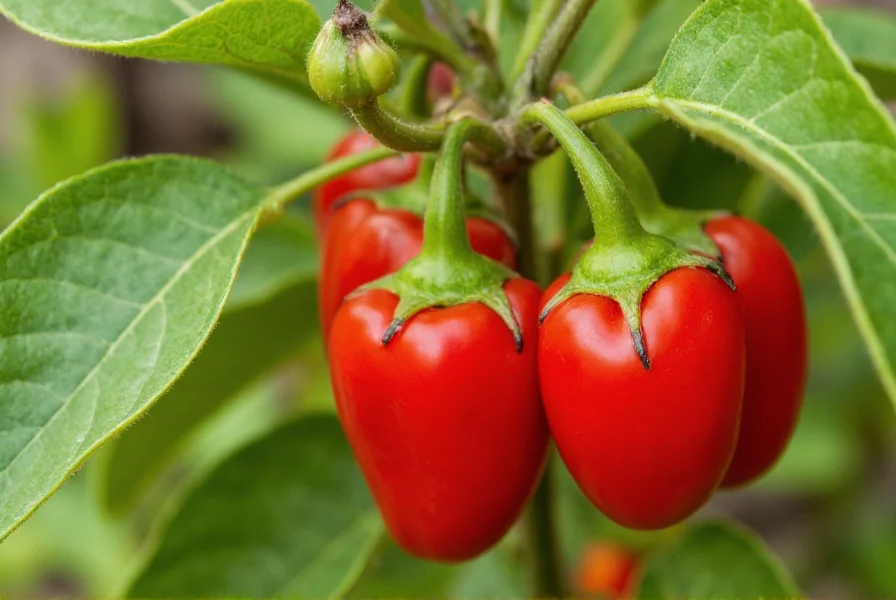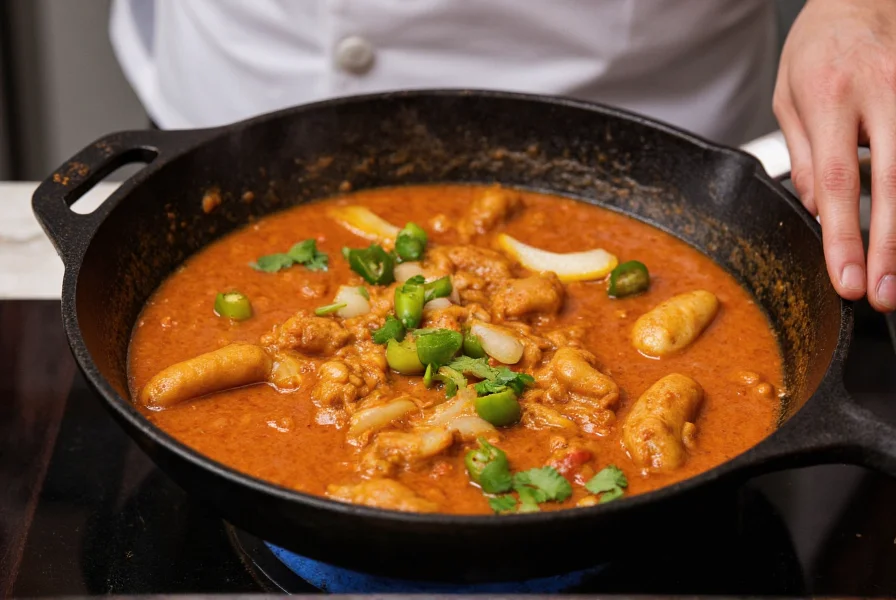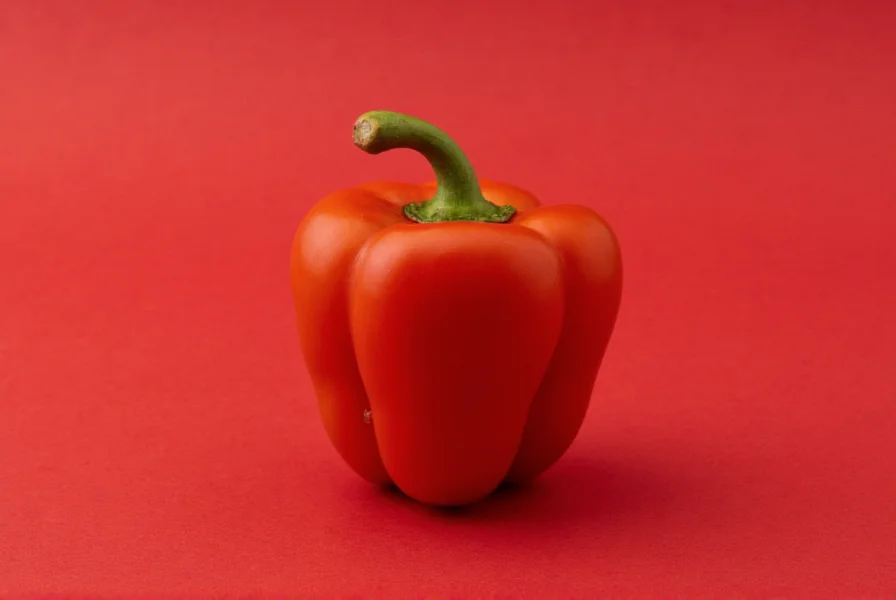Often called "apple peppers" due to their distinctive shape, manzano peppers (Capsicum pubescens) represent one of the five domesticated chili species with unique characteristics that set them apart from more common varieties like jalapeños or habaneros. Unlike most peppers that grow on bushes, manzano peppers develop on woody perennial plants that can reach up to 13 feet tall in their native habitats.
What Makes Manzano Peppers Unique
Manzano peppers belong to the Capsicum pubescens species, which differs significantly from the more common Capsicum annuum (jalapeños, bell peppers) and Capsicum chinense (habaneros, ghost peppers). This botanical distinction explains several unique characteristics:
- Hairy leaves - The Latin "pubescens" refers to the fine hairs on leaves and stems
- Black seeds - Unlike the white or cream seeds of other pepper varieties
- Cold tolerance - Can withstand temperatures down to 50°F (10°C)
- Longer growing season - Typically requires 90-120 days to reach maturity
Native to the Andean regions of South America, manzano peppers have been cultivated for thousands of years by indigenous communities. The name "manzano" comes from the Spanish word for apple, describing both their shape and subtle fruity flavor profile that distinguishes them from purely spicy peppers.

Heat Level and Flavor Profile
With a Scoville heat range of 50,000-80,000 units, manzano peppers sit between serranos (10,000-23,000) and habaneros (100,000-350,000) on the heat scale. However, their heat manifests differently than many chili varieties:
| Pepper Variety | Scoville Range | Heat Characteristic |
|---|---|---|
| Manzano | 50,000-80,000 | Gradual build with fruity finish |
| Habanero | 100,000-350,000 | Immediate intense heat |
| Serrano | 10,000-23,000 | Sharp, direct heat |
| Aji Dulce | 0-500 | Sweet with minimal heat |
Unlike many hot peppers that deliver immediate, intense heat, manzanos offer a more complex experience. Their heat builds gradually, allowing the distinctive flavor to shine through before the spiciness intensifies. The flavor profile combines bright citrus notes with tropical fruit undertones and subtle earthy elements, making them particularly valuable in culinary applications where both heat and flavor complexity matter.
Culinary Applications
Chefs and home cooks value manzano peppers for their versatility across various cooking methods:
- Raw applications - Finely diced in salsas and fresh sauces where their fruity notes complement tomatoes and citrus
- Cooked preparations - Simmered in stews, soups, and bean dishes where heat mellows while flavor deepens
- Pickling - Preserved in vinegar solutions to create vibrant, flavorful condiments
- Drying - Sun-dried for use in traditional Andean spice blends
- Infusions - Steeped in oils or vinegars to impart subtle heat and flavor
When working with manzano peppers, remember that heat concentration varies within the pepper. The placenta (white ribs) contains the highest concentration of capsaicin, while the flesh offers more of the characteristic fruit flavor. For recipes where you want flavor without excessive heat, remove the seeds and ribs before use.

Growing Manzano Peppers
Cultivating manzano peppers presents unique challenges compared to more common varieties. Their Capsicum pubescens heritage gives them specific requirements:
Manzano peppers thrive in cooler mountain climates (60-80°F / 15-27°C) rather than the hot conditions preferred by most chili varieties. They require consistent moisture but cannot tolerate waterlogged soil. Gardeners in temperate regions often grow them in containers that can be moved indoors during temperature extremes.
One distinctive feature of manzano cultivation is their extended growing season. While many peppers produce within 60-80 days, manzanos typically need 90-120 days to reach full maturity. The plants themselves can become small trees when grown in suitable climates, reaching heights of 8-13 feet with proper care.
For gardeners attempting to grow manzano peppers, starting seeds indoors 8-10 weeks before the last frost provides the best results. The seeds germinate more slowly than other pepper varieties, often taking 3-4 weeks to sprout. Using bottom heat around 80-85°F (27-29°C) significantly improves germination rates.
Substitutes and Comparisons
When manzano peppers aren't available, several alternatives can approximate their flavor and heat profile:
- Aji charapita - Closer heat level but smaller size and different flavor profile
- Habanero + bell pepper blend - Mix 1 part habanero with 2 parts bell pepper to approximate manzano's heat-to-flavor ratio
- Scotch bonnet - Similar fruitiness but significantly hotter (use at half quantity)
- Thai dragon + citrus zest - Provides heat with added fruit notes
Understanding the difference between manzano peppers and aji dulce proves particularly valuable for cooks. While they look similar, aji dulce peppers contain minimal heat (0-500 Scoville units) compared to manzano's significant kick. This makes aji dulce suitable for dishes where pepper flavor without heat is desired, while manzanos work better when both flavor and noticeable heat are required.
Nutritional Benefits
Like other chili peppers, manzanos offer impressive nutritional value beyond their culinary applications. A single medium manzano pepper (about 45g) provides:
- Approximately 180% of the daily recommended vitamin C
- Significant vitamin A content (about 20% of daily value)
- Good source of vitamin B6 and potassium
- Contains capsaicin, which may support metabolism and pain relief
- Low in calories (about 18 calories per pepper)
The capsaicin in manzano peppers may offer several health benefits, including potential anti-inflammatory properties and support for cardiovascular health. Research suggests capsaicin might help regulate blood sugar levels and provide modest metabolic benefits, though these effects require consumption as part of a balanced diet rather than in isolation.
Finding Manzano Peppers
Availability of fresh manzano peppers varies significantly by region. In South America, particularly in Peru, Ecuador, and Bolivia, they're commonly found in local markets. In the United States, specialty grocery stores, Latin American markets, and farmers' markets in warmer climates offer the best chances of finding them fresh.
During peak season (typically late summer through fall), some mainstream grocery chains in western and southern states may carry them. When fresh peppers aren't available, frozen manzano peppers or dried flakes provide alternatives for many recipes, though they lack the bright freshness of the whole pepper.
Frequently Asked Questions
How hot are manzano peppers compared to jalapeños?
Manzano peppers range from 50,000-80,000 Scoville heat units, making them approximately 8-15 times hotter than jalapeños (2,500-8,000 Scoville units). However, their heat builds more gradually than jalapeños, with a noticeable fruity flavor that balances the spiciness.
Can I grow manzano peppers in a container?
Yes, manzano peppers grow well in containers (minimum 5-gallon size) as their woody growth habit adapts to container constraints. Use well-draining potting mix, provide 6-8 hours of direct sunlight, and maintain consistent moisture. Container growing allows moving plants indoors during temperature extremes, which is beneficial since manzanos prefer cooler conditions than most peppers.
What's the best way to preserve manzano peppers?
Freezing whole manzano peppers preserves both flavor and heat effectively. Simply wash, dry, and place in airtight freezer bags. For culinary flexibility, consider making a simple vinegar-based pickle or creating a roasted pepper puree before freezing. Drying works well too, though it concentrates the heat while diminishing some of the fresh fruity notes.
Are manzano peppers the same as rocoto peppers?
Yes, manzano peppers are commonly called rocoto peppers in many South American countries. Both names refer to the same Capsicum pubescens variety. "Manzano" means apple in Spanish (referring to shape), while "rocoto" comes from Quechua, the indigenous language of the Andes.
Why do manzano peppers have black seeds?
Black seeds are a distinctive characteristic of the Capsicum pubescens species. This trait differentiates manzanos from other pepper varieties which typically have white, cream, or pale yellow seeds. The black seed color appears as the peppers mature and remains through all color stages from green to red.











 浙公网安备
33010002000092号
浙公网安备
33010002000092号 浙B2-20120091-4
浙B2-20120091-4